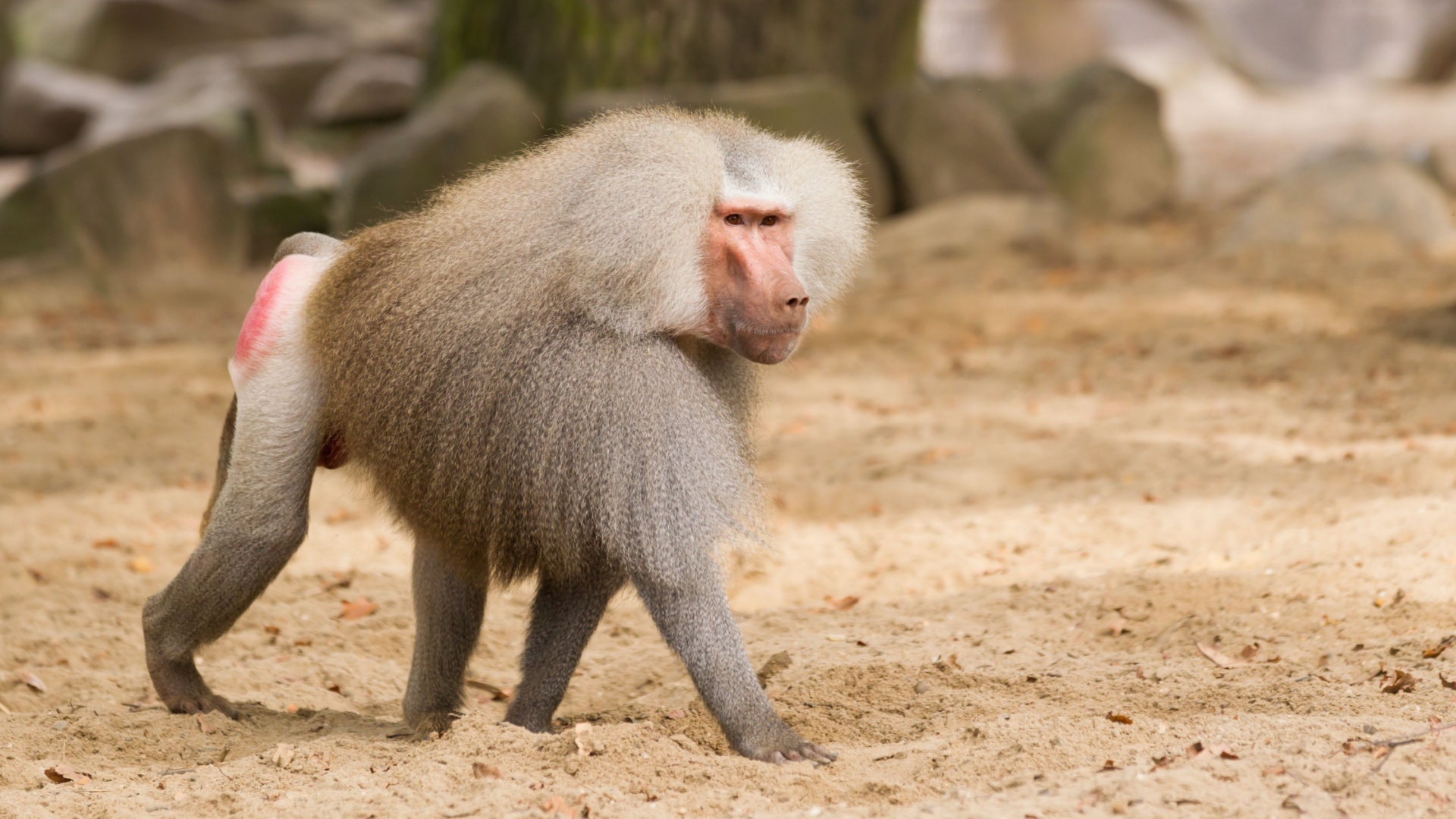Monkeys aren’t all tiny, playful tree-hoppers. Some are so massive they could rival a heavyweight champion in sheer size and strength! We’re talking powerful baboons, massive mandrills, and even a monkey whose oversized nose steals the spotlight like a celebrity on the red carpet.
But their size isn’t the only thing turning heads. These incredible primates have unique personalities and wild features to match. Whether they’re bold, mysterious, or just plain quirky, each one brings something unforgettable to the animal kingdom.
Get ready to explore the world of monkeys where size meets style, strength, and a whole lot of personality!
1. De Brazza’s Monkey
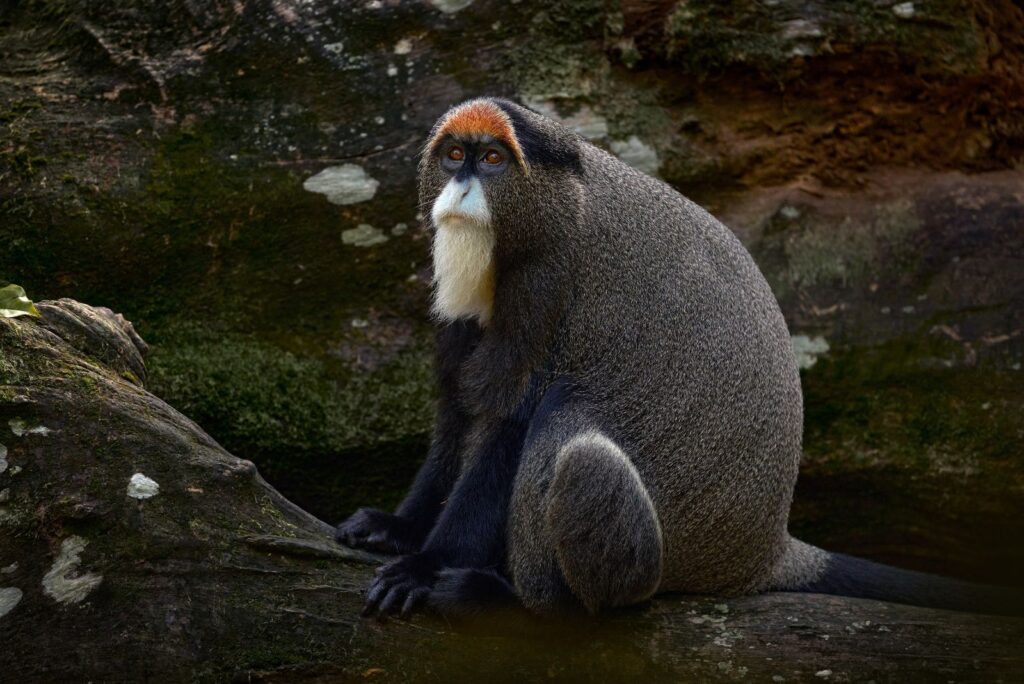
With its bushy white beard and orange forehead, the De Brazza’s monkey is a true icon of style.
Known for their calm, secretive nature, these old souls often stay out of sight, blending into dense forests of Central Africa. They’re so good at hiding, locals call them “ghost monkeys.”
They have a mighty sense of family, often sticking close to their troop and using quiet vocalizations to communicate – no drama here!
De Brazza’s monkeys have powerful legs for climbing and leaping, but they prefer a more chill, ground-hugging lifestyle compared to other monkeys.
They’re also skilled foragers, feasting on fruits, seeds, and insects with their signature cheek pouches.
2. Colobus Monkey
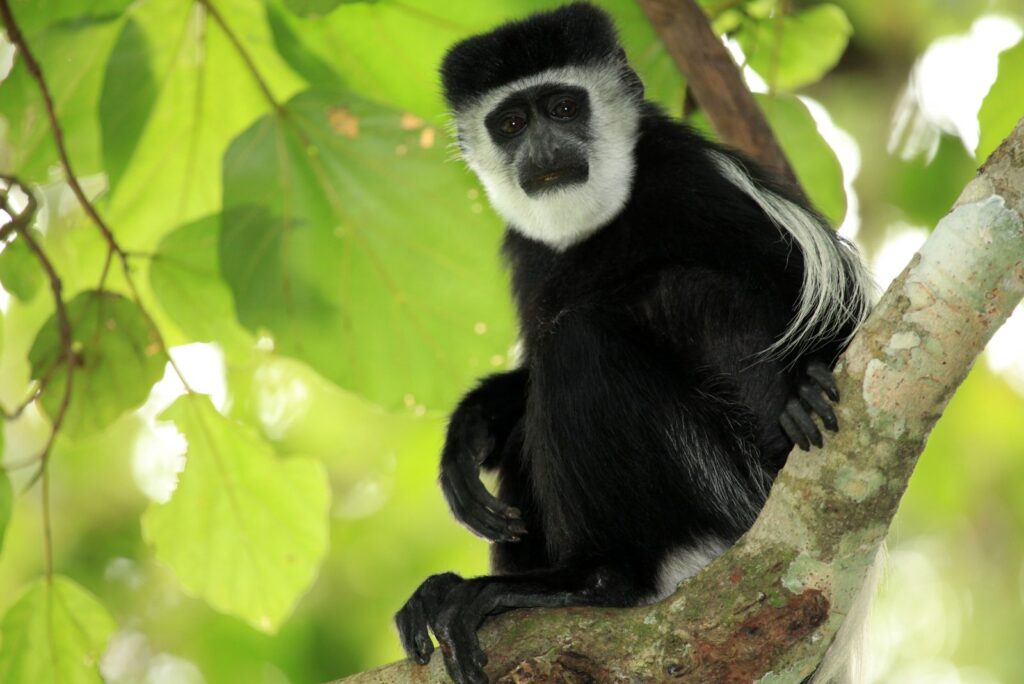
Draped in silky black fur with a flowing white cape-like mantle and a long, fluffy tail, this monkey looks like it’s dressed for a royal gala.
Found in African forests, colobus monkeys are built for life in the treetops. They’re elite jumpers, able to leap over 50 feet between branches, practically flying through the canopy like furry superheroes.
Oddly enough, colobus monkeys are leaf-eaters. Their superpower is a complex stomach that can digest tough, fibrous leaves that most other primates wouldn’t dare touch.
They’re pretty chill too, spending most of their time lounging in trees, chewing leaves, and living the slow, leafy dream.
They stand out thanks to their bold, stylish fur and graceful movements.
3. Japanese Macaque (Snow Monkey)
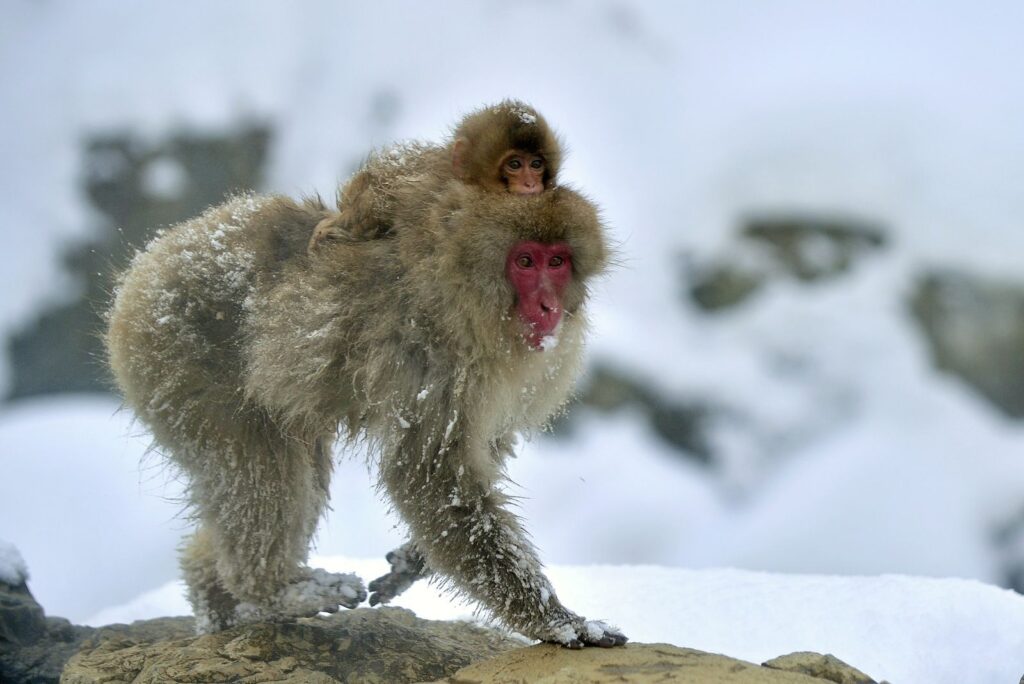
One of the most famous monkeys. Why? Because these clever primates have mastered the art of self-care. During winter, they’re often spotted soaking in hot springs, steam rising around their pink faces like they’re at a luxury spa.
Native to the snowy mountains of Japan, they’re the most cold-tolerant monkeys in the world, making hot spring dips a necessary survival hack. But it’s not all hot tubs and zen, Japanese macaques are highly social, living in close-knit groups where grooming sessions double as bonding rituals.
They’re also ridiculously smart, with some troops even learning to wash their food before eating it – clean eating goals, right?
Though smaller than many monkeys on this list, their unique cold-weather lifestyle and adorable fluff make them unforgettable in the world of primates.
4. Proboscis Monkey
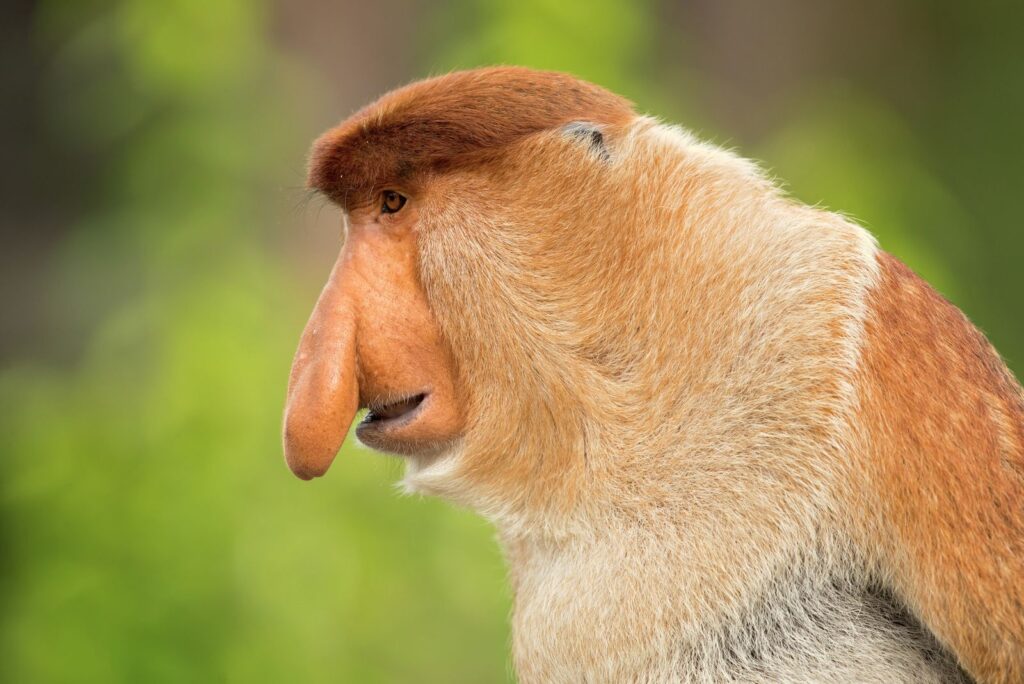
With a height of 2.5 feet and a weight of 50 pounds, the proboscis monkey is proof that size isn’t the only thing that stands out – so does the giant nose. Yep, the males sport massive, drooping noses that look more like a cartoon character than a real animal.
That oversized schnoz acts like a built-in megaphone, amplifying their calls to attract females and warn off rival males – nature’s version of a personal sound system.
Native to Borneo, these monkeys spend most of their time lounging in trees near rivers and mangroves. Despite their appearance, they’re surprisingly agile and can swim like pros, using webbed toes to paddle across the water.
Though their looks might get the most attention, they’re also fascinating for their complex social groups and unique diets that rely on tough leaves.
Big-nosed, big personality! This monkey’s a true original.
5. Hamadryas Baboon
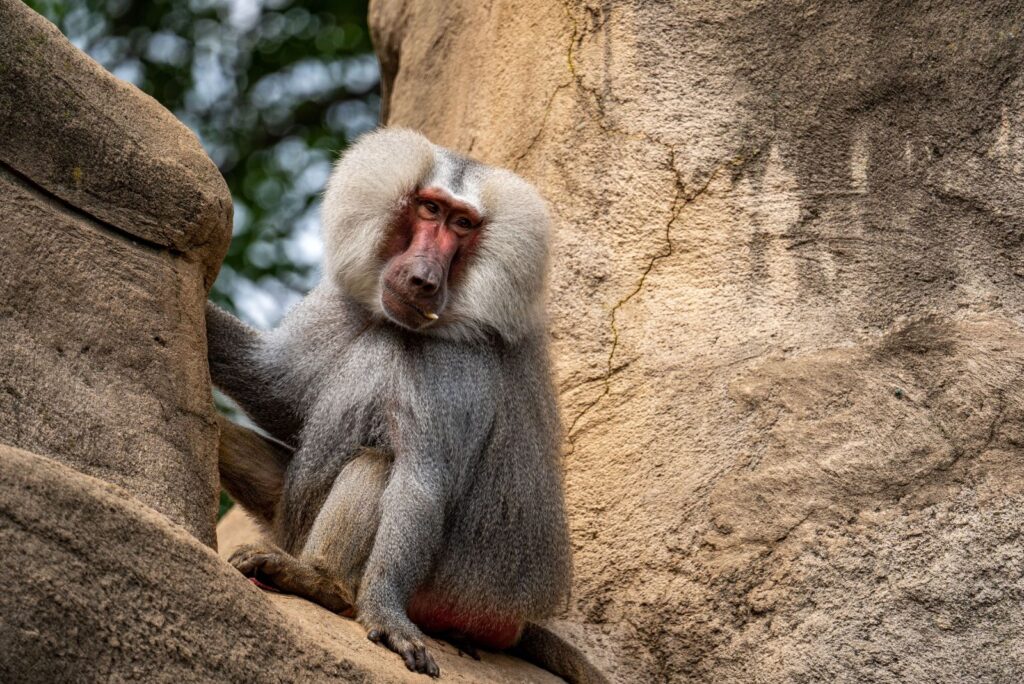
The Hamadryas baboon has a presence that feels much larger, probably thanks to its epic silver mane. The males look like they stepped out of a medieval fantasy with their flowing silver fur and fierce expressions.
But this ancient-looking monkey is more than just a pretty face: it has serious historical cred too, having been revered in ancient Egypt as a sacred animal.
Hamadryas baboons live in the arid regions of the Horn of Africa, where food can be scarce, so they’ve developed highly structured social systems. Males lead small harems, keeping their groups tightly bonded and well-organized.
Standing 2 feet tall and weighing up to 66 pounds, their commanding appearance and strong social bonds make them fascinating.
And yes, they’re still rocking that glorious silver mane like it’s never gone out of style.
6. Yellow Baboon
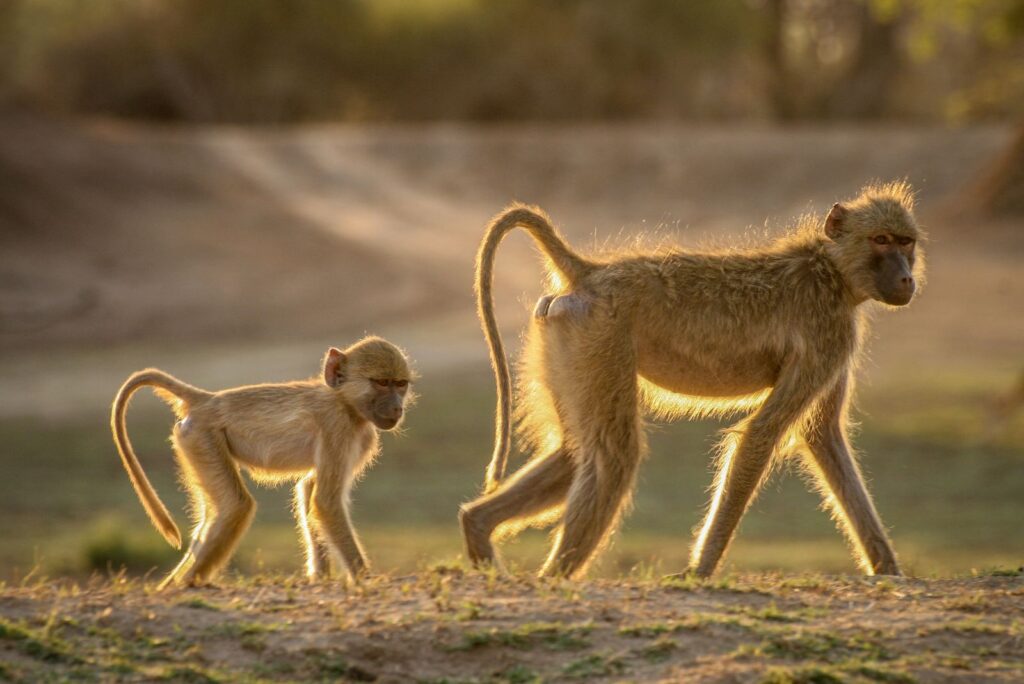
One of the flashiest monkeys out there thanks to its golden-yellow fur that practically glows in the African sun.
Found in savannas and forests, these baboons are social butterflies, living in massive troops where everyone knows everyone. Their long limbs and slender bodies make them fast runners and excellent climbers, perfect for dodging predators like leopards.
These baboons can be serious warriors when defending their troops. They’re also incredibly smart, working together to find food and keep watch for danger.
With their bright fur and bold personalities, yellow baboons prove that standing out isn’t just about size, it’s about confidence too.
7. Chacma Baboon
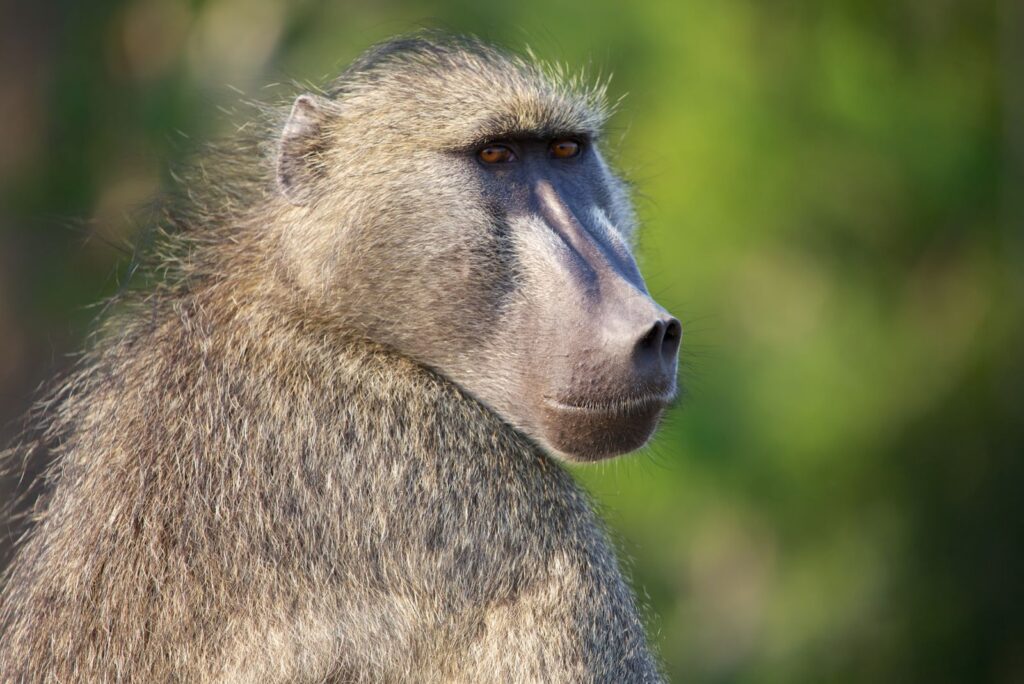
This South African native is one of the heaviest monkeys out there, measuring up to 3.9 feet long and tipping the scales at 88 pounds.
They’re complex, highly intelligent primates with intricate troop hierarchies. They often work together to outsmart predators, and their massive size means few animals dare challenge them.
Known for their bravery, Chacma baboons will even face off against leopards when threatened!
Despite their size, they’re surprisingly agile and often seen casually strolling across roads in parts of Africa.
Their strong social bonds and protective nature make them feel larger than life – both in size and spirit.
8. Olive Baboon
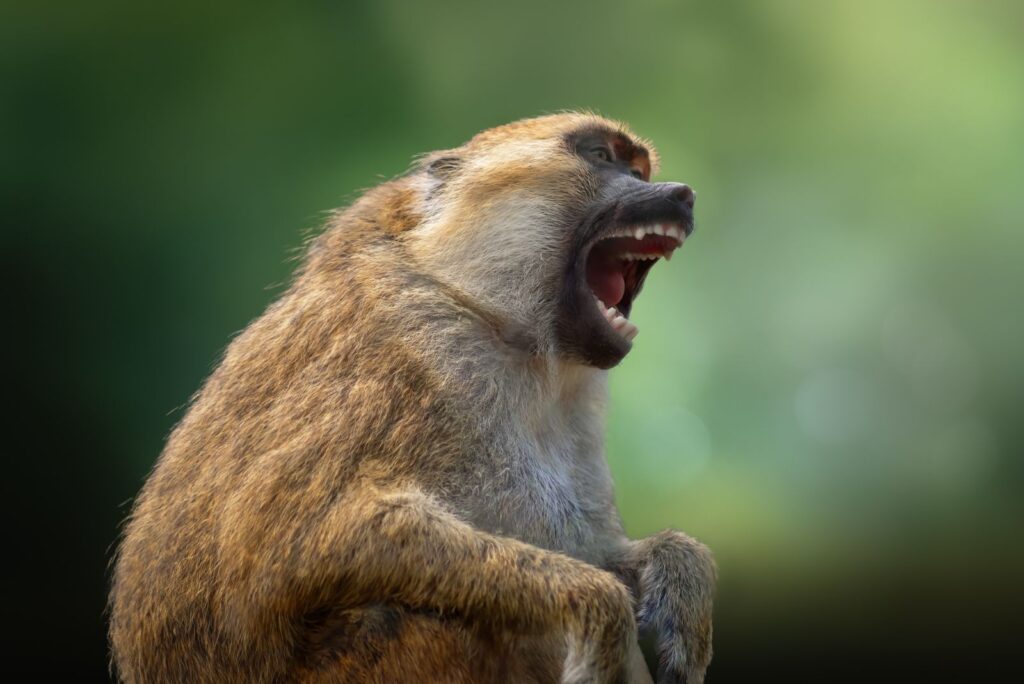
These greenish-furred primates live in massive troops of up to 150 individuals, making them one of the most social primates on the planet.
They weigh up to 99 pounds, their size and strength help keep predators at bay, but it’s their teamwork that really makes them formidable. Olive baboons have complex social structures with grooming, alliances, and even babysitting duties within their groups. They’re also pretty adaptable, thriving in forests, savannas, and grasslands alike.
Big, bold, and brimming with personality, these baboons are the definition of “squad goals.”
9. Drill
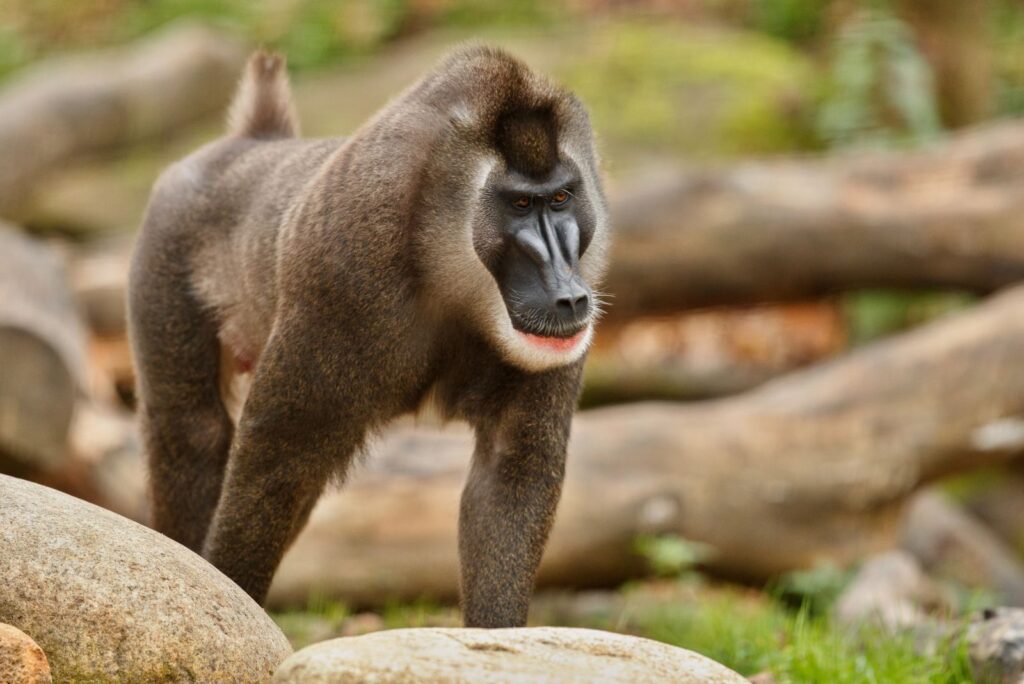
Standing at 2.6 feet tall and weighing up to 110 pounds, the drill is a muscular, powerful primate built like a jungle bodybuilder. Though often mistaken for its flashier cousin, the mandrill, the drill keeps things low-key with a dark, almost mask-like face and a more subtle appearance.
Native to the rainforests of Nigeria, Cameroon, and Equatorial Guinea, drills prefer a life in the shadows, sticking close to dense undergrowth. They live in tight-knit groups led by dominant males who maintain order, but drills aren’t all brawn: they’re highly social and thrive on cooperation.
Sadly, despite their strength, drills are critically endangered due to habitat destruction and poaching, making them one of the rarest monkeys on this list.
With their sheer size, impressive physical strength, and close-knit troop dynamics, the drill is a gentle giant of the primate world – one we should definitely work harder to protect.
10. Mandrill
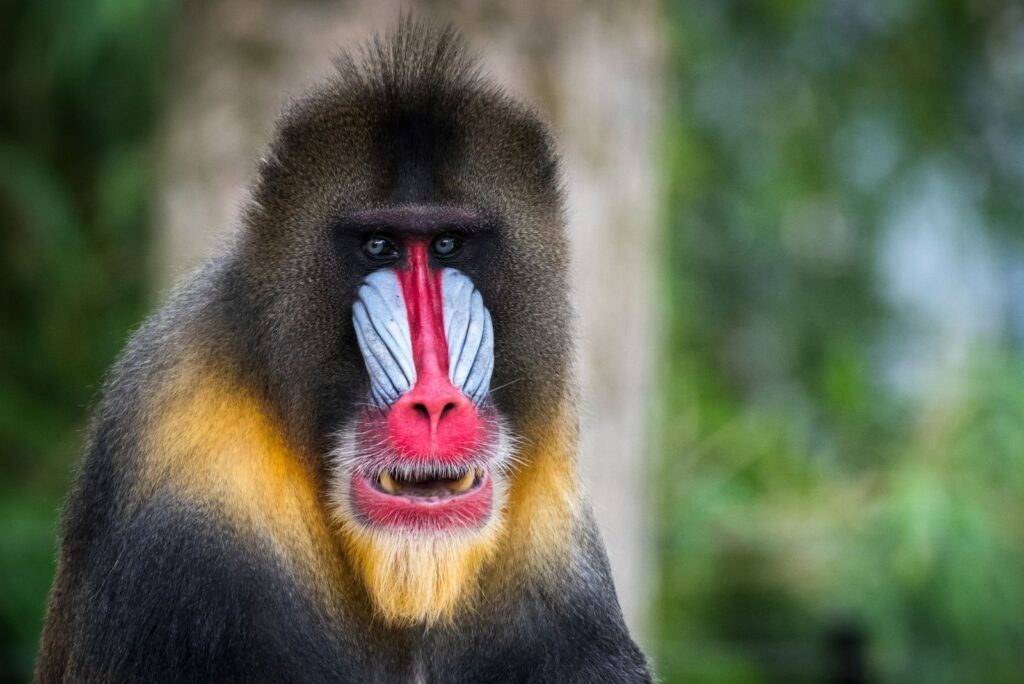
At a towering 3.3 feet tall and weighing a massive 119 pounds, the mandrill takes the crown as the largest monkey on the planet.
With its vibrant, rainbow-colored face, electric blue and red snout, and golden mane, it looks like it was painted by an artist who couldn’t decide on just one color.
But this primate isn’t just here for the fashion statement, its size and powerful build make it a true force of nature. Native to the rainforests of Gabon and neighboring countries, mandrills live in massive groups called hordes, sometimes with hundreds of individuals.
Despite their size and strength, mandrills are mostly peaceful, preferring to forage for fruits, seeds, and small insects. However, when threatened, a mandrill will flash those impressive fangs as a warning – and trust me, you’d want to back off.
Giant, colorful, and awe-inspiring, the mandrill is nature’s masterpiece in both size and style.

